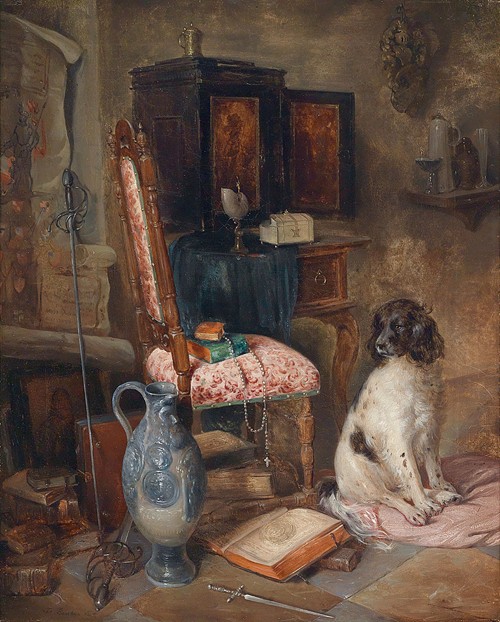
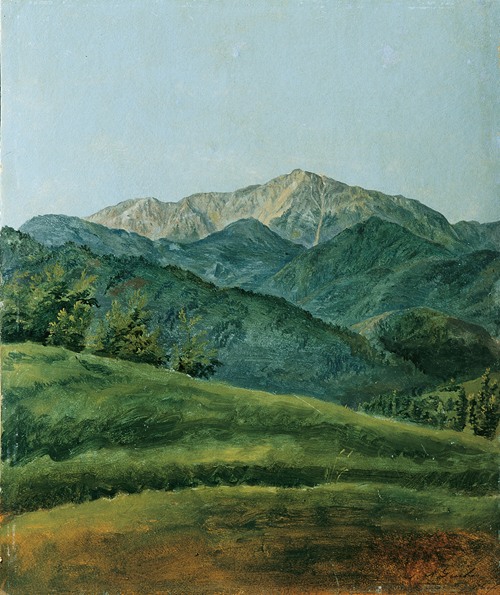
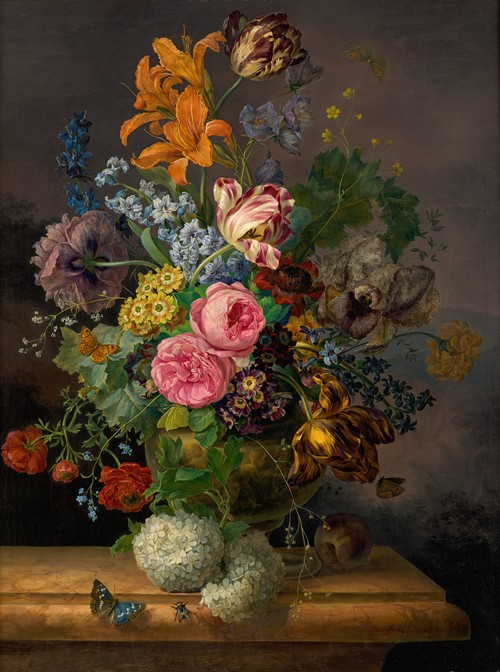
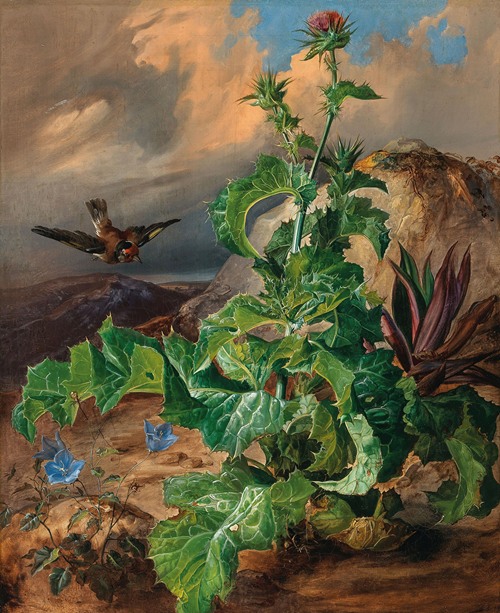
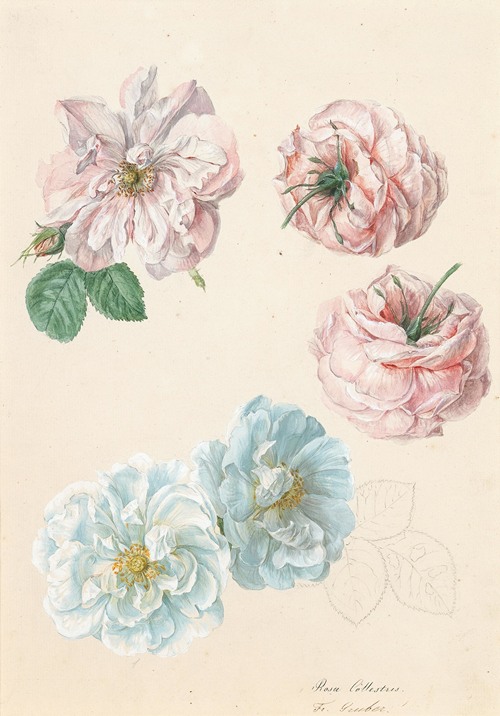
Franz Xaver Gruber was accepted as a student at the Vienna Academy at the age of 15 . In 1822 he received the Gundel Prize for flower painting, after which he was a drawing teacher at an institute. In order to further his education in botany, he also attended lectures by Jacquin.
Between 1839 and 1859 he created a watercolor collection of all camellias for Prince Metternich , and for Emperor Ferdinand I he painted numerous orchids and palm species in watercolors.
His two siblings Carl Franz Gruber (1803–1845) and his sister Katharina, married Hawelek (1807–1859), were flower painters.




